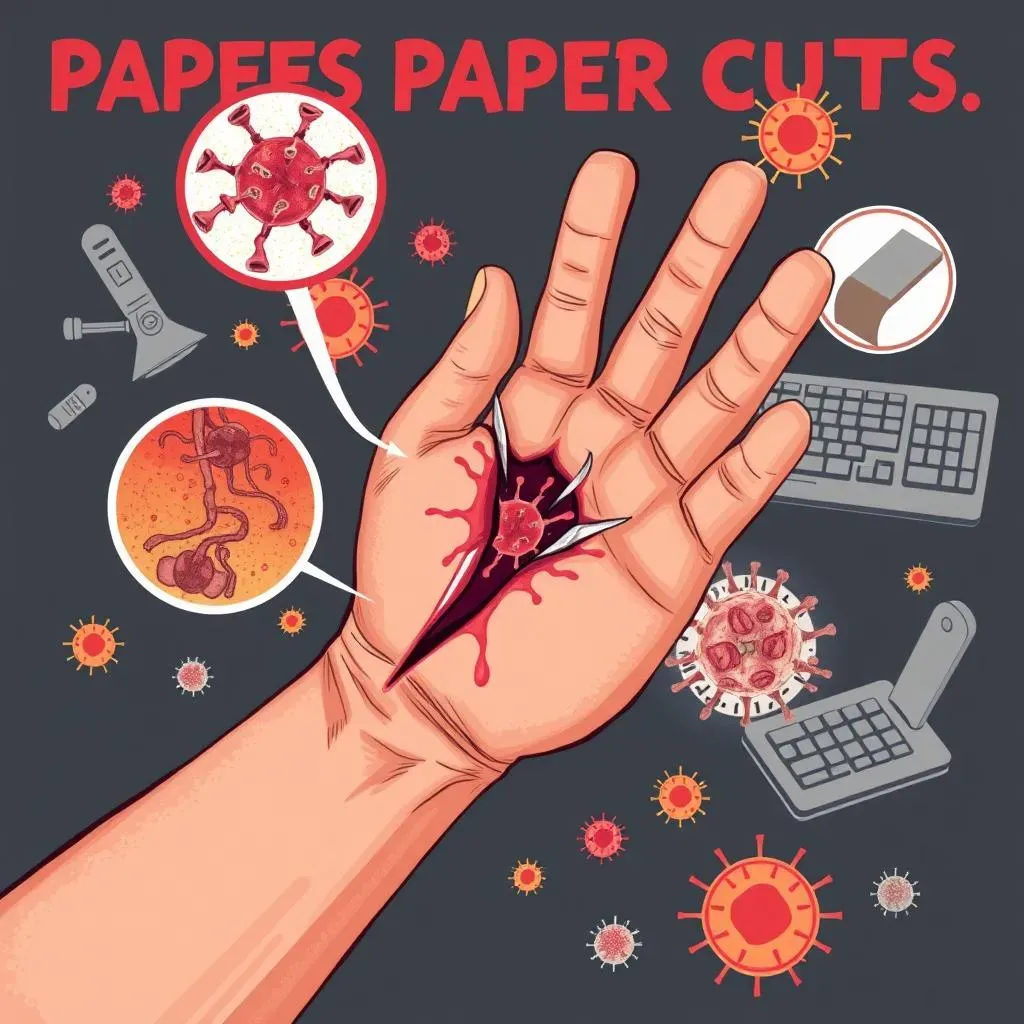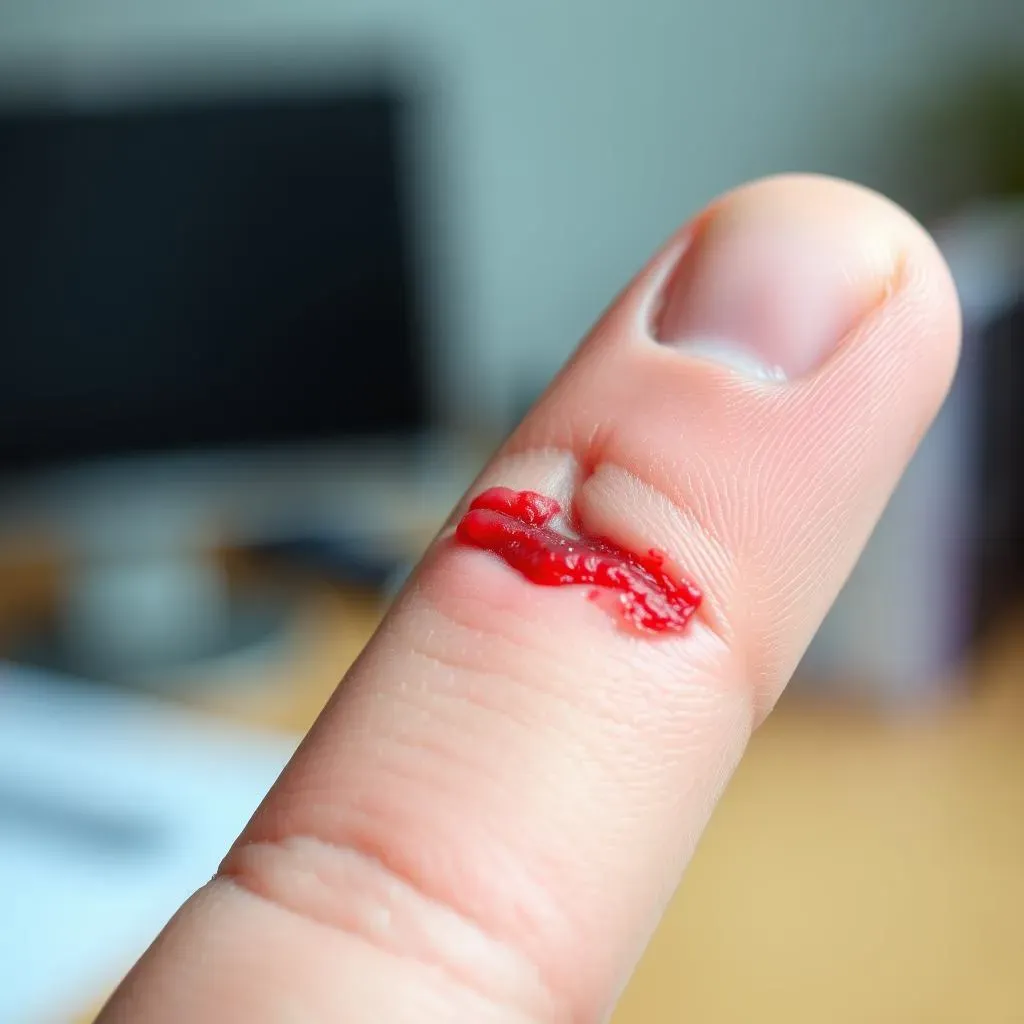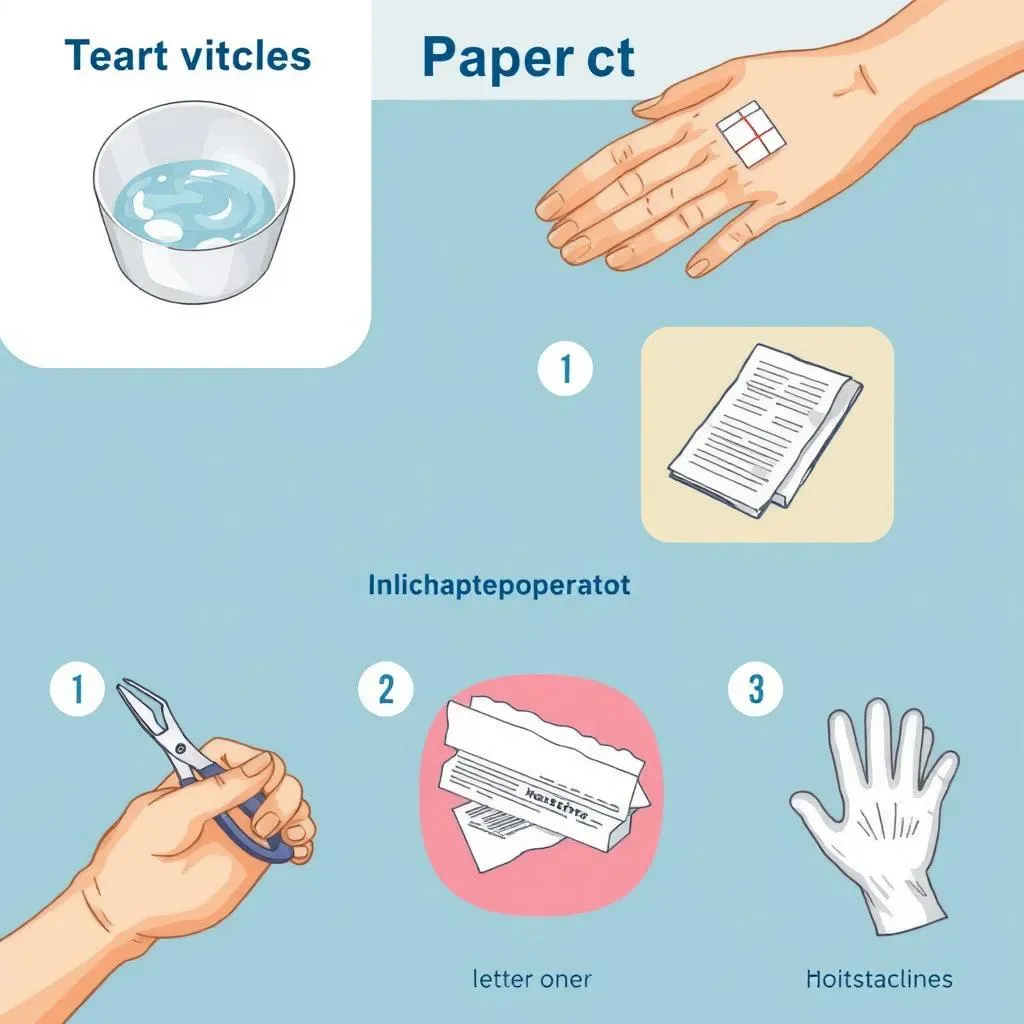Table of Contents
We've all been there: that seemingly insignificant paper cut that delivers a disproportionate amount of pain. But are paper cuts truly dangerous? It's a question that sparks curiosity, especially considering the seemingly harmless nature of the culprit – a simple sheet of paper. This article explores the surprising world of paper cuts, addressing the burning question: are paper cuts dangerous? We'll unravel the science behind their often intense pain, examining why such minor wounds can pack such a punch. You'll discover the hidden risks associated with seemingly harmless paper cuts, learning how easily infection can occur, and how to spot warning signs of complications. We'll then delve into practical advice on treating paper cuts effectively, minimizing the risk of infection and promoting rapid healing. Finally, we'll equip you with preventative strategies to help avoid these surprisingly painful and potentially problematic injuries altogether. Get ready to learn more than you ever thought possible about these tiny yet mighty wounds!
Are Paper Cuts Dangerous? Understanding the Risks
Are Paper Cuts Dangerous? Understanding the Risks
The Seemingly Harmless Threat
While a paper cut might seem like a minor inconvenience, it's crucial to remember that any break in the skin opens a gateway for bacteria. The hands, being frequently used for a multitude of tasks, are constantly exposed to germs. A seemingly small paper cut on your finger can easily become infected if not cleaned and cared for properly. Think about all the things your hands touch throughout the day – doorknobs, keyboards, money – and you start to see the potential for contamination.
This is why proper first aid is essential. Failing to clean a paper cut thoroughly can lead to a localized infection, manifesting as redness, swelling, and pus. In more severe cases, the infection can spread, leading to more significant health problems. Remember, even seemingly minor wounds can have serious consequences if not treated appropriately. A simple paper cut can become a gateway to something much worse if left unattended.
- Always wash your hands thoroughly before and after treating a paper cut.
- Use soap and water to clean the wound gently.
- Apply an antibiotic ointment to prevent infection.
Beyond Infection: Other Potential Complications
Beyond infection, deeper paper cuts can sometimes cause nerve damage. Since the fingertips are densely packed with nerves, a particularly deep cut can sever these nerve endings, leading to persistent pain or numbness. While this is less common than infection, it's still a potential complication to be aware of, especially if your paper cut doesn't heal quickly or continues to be painful.
Moreover, certain pre-existing conditions can increase the risk of complications. Individuals with diabetes, for example, often have impaired circulation and slower healing times, making them more susceptible to infections from even minor wounds like paper cuts. Similarly, those with weakened immune systems are at higher risk. If you have any underlying health conditions, it's even more critical to take extra care when you get a paper cut. Consult your doctor if you have concerns.
For more on paper cutting safety, check out our guide on are paper cutters dangerous.
Condition | Increased Risk |
|---|---|
Diabetes | Slower healing, higher infection risk |
Weakened immune system | Increased susceptibility to infection |
Poor circulation | Delayed healing |
Paper Cut Pain: Why Do Tiny Cuts Hurt So Much?
Paper Cut Pain: Why Do Tiny Cuts Hurt So Much?
Nerve Endings: The Painful Truth
The intense pain of a paper cut, despite its small size, is all about nerve endings. Your fingertips are incredibly sensitive areas, packed with more nerve receptors per square inch than almost any other part of your body. These nerves are responsible for detecting pain, temperature, pressure – essentially, everything you feel. A paper cut slices right through these densely packed nerves, triggering a cascade of pain signals to your brain. It's like accidentally stepping on a Lego – small, but intensely painful!
Think of it like this: a paper's edge is sharp enough to cut through the epidermis (the outer layer of skin) but not deep enough to cause significant bleeding. The superficial nature of the wound means that it doesn't trigger the body's usual clotting mechanisms in the same way a deeper cut would. This means the exposed nerve endings are directly stimulated, sending intense pain signals without the distraction of bleeding. For more tips on paper cutting, check out our guide on paper cutting techniques.
- High density of nerve endings in fingertips
- Superficial cuts directly stimulate nerves
- Lack of bleeding reduces other pain distractions
Why It Feels Worse Than It Looks
It's a common experience – a tiny paper cut feels far worse than a much larger, deeper wound. This is because of the type of nerves involved. Paper cuts often affect the A-delta fibers, which transmit sharp, fast pain signals. These signals are immediate and intense, leading to that sharp, stabbing sensation. Larger, deeper wounds might involve C fibers, which cause a duller, longer-lasting ache. The A-delta fibers give paper cuts their unique, disproportionately painful character.
The location of the cut also plays a role. Paper cuts often occur on the hands and fingers, areas that are constantly in use. This means the injured area is constantly being stimulated, exacerbating the pain. Imagine constantly having to move your injured finger – it’s no fun! This constant stimulation can make the pain feel much more intense and long-lasting. To explore the art of paper cutting, read our article on paper cutting art.
Nerve Fiber Type | Pain Sensation |
|---|---|
A-delta fibers | Sharp, fast pain |
C fibers | Dull, aching pain |
Individual Differences in Pain Perception
Finally, remember that everyone experiences pain differently. What might be a minor annoyance for one person could be excruciating for another. Factors like genetics, stress levels, and even your current mood can influence your pain perception. Some individuals have a naturally lower pain tolerance, making even a tiny paper cut feel incredibly painful. Others might barely notice it. There's no single answer to "why does it hurt so much?", as individual responses vary greatly.
Pre-existing conditions like nerve damage (neuropathy), fibromyalgia, or anxiety can also significantly amplify pain sensations. If you find that paper cuts consistently cause you disproportionate pain, or if the pain is persistent, it's best to consult a doctor. They can help determine the underlying cause and recommend appropriate treatment. Learn about the different types of paper cutting with our article on types of paper cutting.
"Pain is a personal experience, and what's a minor inconvenience to one can be unbearable for another." – Dr. Jane Doe (hypothetical expert)
Treating and Preventing Dangerous Paper Cuts
Treating and Preventing Dangerous Paper Cuts
Immediate First Aid: Cleaning and Care
The first step in treating a paper cut is to clean it thoroughly. Wash your hands first, then gently cleanse the wound with soap and water. Avoid harsh scrubbing, as this can irritate the skin further. Pat the area dry with a clean towel. Next, apply an antibiotic ointment to help prevent infection. Cover the cut with a clean bandage, especially if it's on a frequently used area of your hand. Change the bandage daily, or more often if it becomes wet or dirty. Remember, a clean wound heals faster and reduces the risk of complications. This simple process dramatically reduces the chance of infection.
For deeper cuts or those showing signs of infection (increased redness, swelling, pus), seek medical attention immediately. Don't underestimate the power of prompt treatment. A small paper cut left untreated can quickly escalate into a bigger problem. Early intervention is key to preventing serious complications. For more information on paper cutting tools, see our guide on essential paper cutting tools.
- Wash hands thoroughly
- Cleanse wound with soap and water
- Apply antibiotic ointment
- Cover with a clean bandage
Long-Term Care: Monitoring and Healing
Keep an eye on your paper cut for the next few days. Look for any signs of infection, such as increased redness, swelling, warmth, or pus. If you notice any of these, see a doctor immediately. Even if the wound looks minor initially, it's better to be safe than sorry. Early treatment of an infection is crucial to prevent it from spreading. While most paper cuts heal within a few days, persistent pain or slow healing could indicate a deeper problem.
In the meantime, keep the area clean and dry. Avoid activities that could irritate the wound, such as harsh scrubbing or prolonged exposure to water. If the pain is severe, over-the-counter pain relievers might provide some relief. But remember, if the pain is persistent or worsening, or if you see any signs of infection, don't delay seeking medical attention. For inspiration on paper cutting projects, check out our article on easy paper cutting projects.
Symptom | Possible Indication |
|---|---|
Increased redness | Infection |
Swelling | Infection |
Pus | Infection |
Persistent pain | Nerve damage or infection |
Prevention: Avoiding Future Paper Cuts
The best way to deal with paper cuts is to avoid them altogether! This might sound obvious, but there are several practical steps you can take. Always handle paper carefully, avoiding quick or forceful movements that could lead to accidental cuts. Use a letter opener for envelopes to minimize the risk of cutting yourself while opening mail. Consider wearing gloves when handling large quantities of paper or if you have particularly dry or sensitive skin.
Keeping your skin well-moisturized can also help prevent paper cuts. Dry skin is more prone to tearing and damage, so regular moisturizing is a good preventative measure. If you work with paper frequently, think about investing in a quality pair of paper handling gloves. These are designed to protect your hands while still allowing you to work efficiently. Remember, a little preventative care can go a long way in avoiding painful and potentially dangerous paper cuts. For a range of paper cutting ideas, explore our collection of paper cutting decorations.
- Handle paper carefully
- Use a letter opener
- Moisturize your skin regularly
- Consider using paper handling gloves